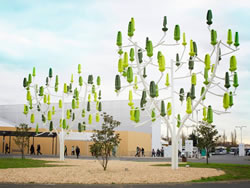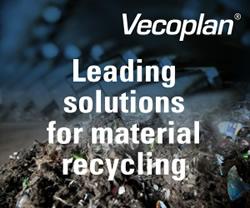These Creative Wind Turbines Will Have You Rethinking What You Know About Wind Power
 By Alison Gillespie for SMITHSONIAN.COM: Although a lot of people are excited about wind energy, few are excited about the pinwheel-shaped machines that often produce it. Branded as noisy, blamed for spoiling bucolic views and proven deadly to some bats and migrating birds, the giant, white-bladed horizontal axis wind turbines that now dot the landscape of the American West have earned a fair number of detractors—even among environmentalists who generally favor renewable power.
By Alison Gillespie for SMITHSONIAN.COM: Although a lot of people are excited about wind energy, few are excited about the pinwheel-shaped machines that often produce it. Branded as noisy, blamed for spoiling bucolic views and proven deadly to some bats and migrating birds, the giant, white-bladed horizontal axis wind turbines that now dot the landscape of the American West have earned a fair number of detractors—even among environmentalists who generally favor renewable power.
But what if you turned the idea sideways, and created a turbine that could spin like a carousel? And what if you made a turbine small enough to sit on top of a building or inside an urban park? Could the result produce enough power to really matter?
The idea isn’t a new one—people have been playing with windmill designs and experimenting with alternatives to the horizontal axis turbine for almost a century now. But in the last two decades, a flurry of interest in expanding renewable energy in cities has attracted the attention of a large number of inventors and artists, many of whom see the vertical axis wind turbine as promising.
There is no single design for these upended wind catchers, but all share one key aspect: the blades turn around an axis that points skyward. And unlike their horizontal brethren, the components and associated generators of a vertical turbine are placed at its base, giving it a lower center of gravity. Most are also relatively small, and unlike horizontal units, they can be grouped very closely together to optimize efficiency. Cont'd...
Comments (0)
This post does not have any comments. Be the first to leave a comment below.
Featured Product

